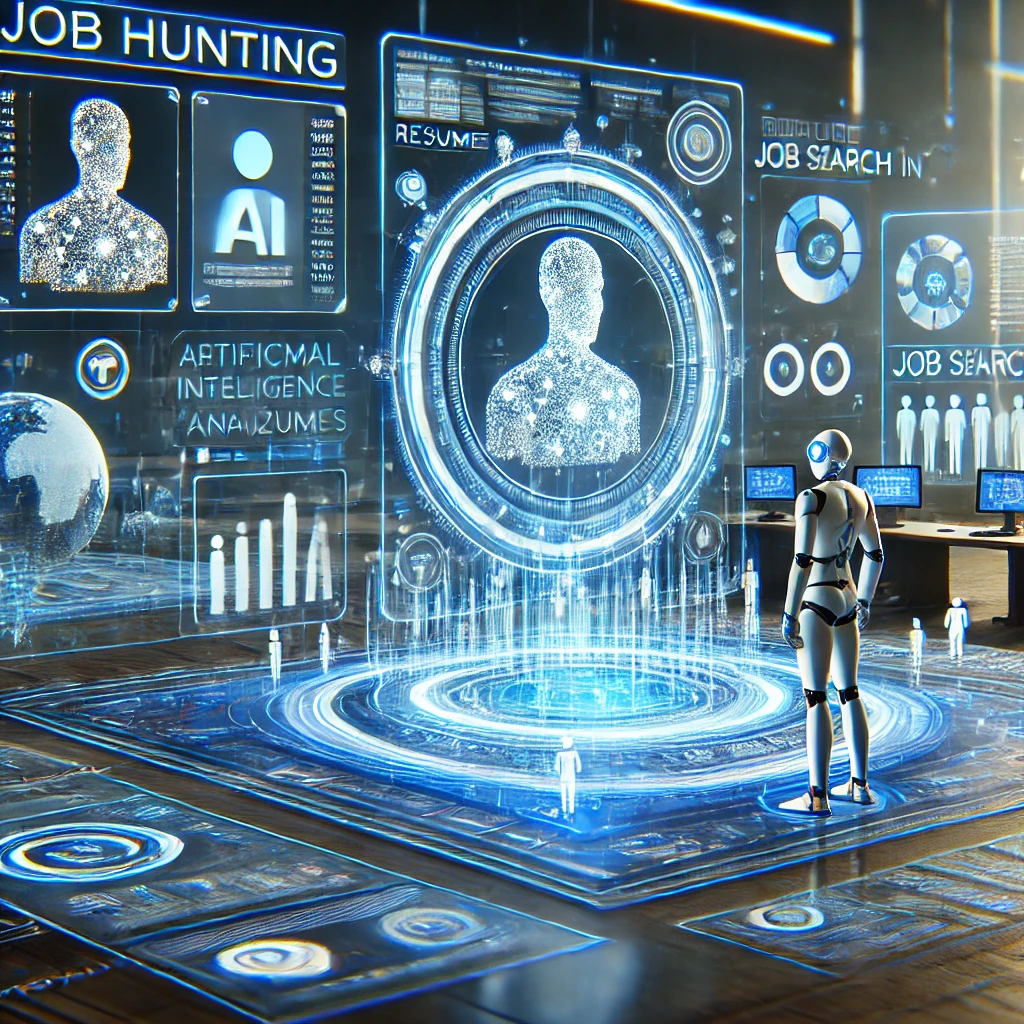As technology continues to reshape various industries, the recruitment process is undergoing significant changes due to the integration of Artificial Intelligence (AI). For job seekers, understanding these changes is crucial to staying competitive in the evolving job market. In this comprehensive guide, we’ll explore how AI is transforming the recruitment process, what it means for your job search, and how you can leverage these advancements to land your next role.
1. AI in Recruitment: An Overview
Artificial Intelligence is revolutionizing the recruitment process by automating time-consuming tasks, improving efficiency, and enabling data-driven decision-making. Companies are increasingly adopting AI tools for various stages of hiring, from resume screening to candidate engagement. AI also allows recruiters to focus on more strategic activities like candidate engagement and cultural fit assessment. This shift not only streamlines the process for employers but also presents new opportunities and challenges for job seekers.
How AI Works in Recruitment:
- Natural Language Processing (NLP): AI uses NLP to understand and analyse resumes, matching them with job descriptions more accurately than manual methods.
- Machine Learning: Over time, AI systems learn from past hiring decisions to improve the accuracy of future candidate assessments.
2. AI-Powered Resume Screening
One of the most common uses of AI in recruitment is in resume screening. Traditionally, recruiters manually sift through hundreds or even thousands of resumes to identify suitable candidates. Today, AI-powered tools like Applicant Tracking Systems (ATS) can analyse resumes quickly. ATS uses algorithms to filter resumes based on predefined criteria, such as keywords, experience levels, and qualifications that match the job requirements. This not only saves time but also reduces human bias in the initial screening process and ensures that only the most relevant candidates move forward.
Pro Tips:
- Keyword Optimization: To pass through AI screening, your resume must be optimized with relevant keywords. Research job descriptions in your industry to identify these keywords and incorporate them naturally into your resume.
- Formatting Tips: Avoid using complex formatting that could confuse ATS. Stick to simple, clean layouts with clearly labelled sections.
Example: If you’re applying for a software engineering role, ensure that terms like “Python,” “Agile development,” and “software lifecycle” are included in your resume.
3. Predictive Analytics in Hiring
Predictive analytics is another powerful tool that AI brings to the recruitment process. By analysing data from previous hires, AI can predict which candidates are most likely to succeed in a particular role. This data-driven approach helps companies make more informed hiring decisions, reducing turnover rates and improving overall employee satisfaction.
How Predictive Analytics is Used:
- Employee Retention: AI can predict which candidates are likely to stay longer with the company based on factors like past job history and cultural fit.
- Performance Prediction: By comparing your profile with high-performing employees, AI can assess your potential contribution to the company.
Pro Tips:
- Highlight Relevant Data: Ensure your resume and LinkedIn profile highlight measurable achievements and relevant experiences that align with the job you’re applying for.
- Continuous Learning: Engage in ongoing education and certifications to align with the predictive models used by AI systems.
4. Personalized Job Recommendations
Gone are the days when job seekers had to manually sift through job boards. AI is transforming how job seekers find opportunities. Platforms like LinkedIn and Glassdoor use AI algorithms to provide personalized job recommendations based on your profile, search history, and industry trends. These tools not only save time but also can help you discover roles that you might not have considered, expanding your job search beyond traditional methods.
Maximizing AI Recommendations:
- Keep Your Profile Updated: Regularly update your LinkedIn and other job profiles with new skills, experiences, and certifications to receive the most accurate job matches.
- Engage with Content: Interact with industry-specific content on platforms like LinkedIn. This signals to AI what areas you are interested in, further refining your job recommendations.
5. Challenges of AI in Recruitment
While AI offers numerous benefits, it also presents certain challenges. One of the most significant concerns is the potential for bias in AI algorithms. If AI systems are trained on biased data, they may inadvertently perpetuate discriminatory practices. Additionally, some job seekers may find it challenging to stand out in an AI-driven process, especially if they are not familiar with how these technologies work.
Potential Pitfalls:
- Bias in Algorithms: AI can inadvertently reinforce biases present in historical hiring data, leading to less diverse workforces.
- Over-reliance on Technology: While AI is a powerful tool, human oversight is crucial to ensure fairness and accuracy in hiring decisions.
Addressing the Challenges:
- Continuous Monitoring: Companies must regularly audit their AI systems to identify and correct biases.
- Human-AI Collaboration: A balanced approach, where AI handles data-driven tasks and humans make the final decisions, can mitigate the risks.
6. Preparing for the Future of Work
As AI continues to shape the future of work, it’s essential to stay ahead of the curve. By understanding how AI is used in recruitment, you can tailor your job search strategies to meet the demands of this evolving landscape. Whether it’s optimizing your resume for AI screening or leveraging predictive analytics, being proactive will help you navigate the job market more effectively.
Pro Tips:
- Leverage AI Tools: Use AI-powered tools like resume builders or LinkedIn profile analysers to optimize your job search materials.
- Stay Informed: Keep up with the latest trends in AI and recruitment by reading industry blogs, attending webinars, and following thought leaders on social media.
- Build a Personal Brand: AI algorithms often prioritize candidates with a strong online presence. Create and share content related to your field to establish yourself as a thought leader.
Explore More: Check out our guide on LinkedIn profile optimization to enhance your visibility in AI-driven recruitment processes.
Conclusion
AI is not just a passing trend; it’s a transformative force that is here to stay. By understanding how AI is reshaping the recruitment process, you can take proactive steps to ensure your job search is effective and aligned with the future of work. Whether it’s optimizing your resume for AI screening or staying ahead of job market trends, embracing these changes will help you stay competitive in today’s job market.
Next Steps:
- Enhance Your Resume: Visit our resume writing services to get professional help tailored to AI-driven recruitment.
- Stay Updated: Follow us on LinkedIn for more tips on navigating the modern job market.
External Resources:
- How AI is Reshaping the Workforce
- The Role of AI in Modern Recruitment

